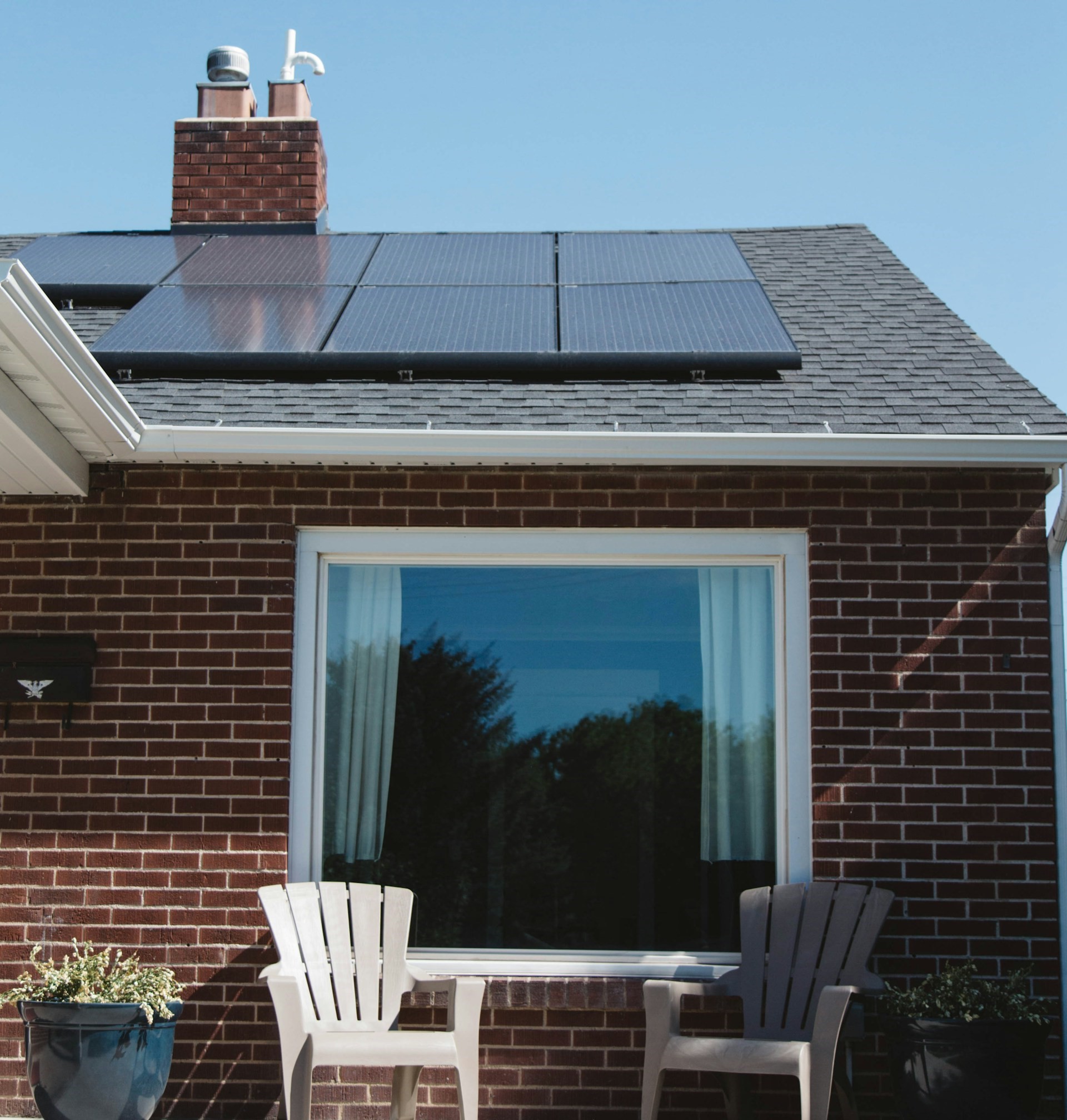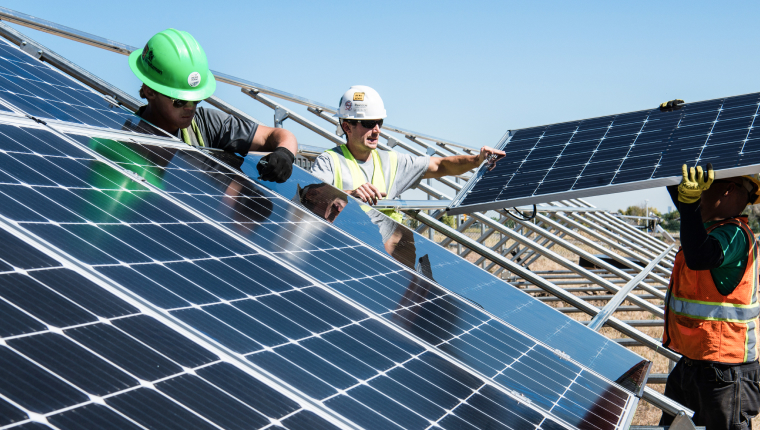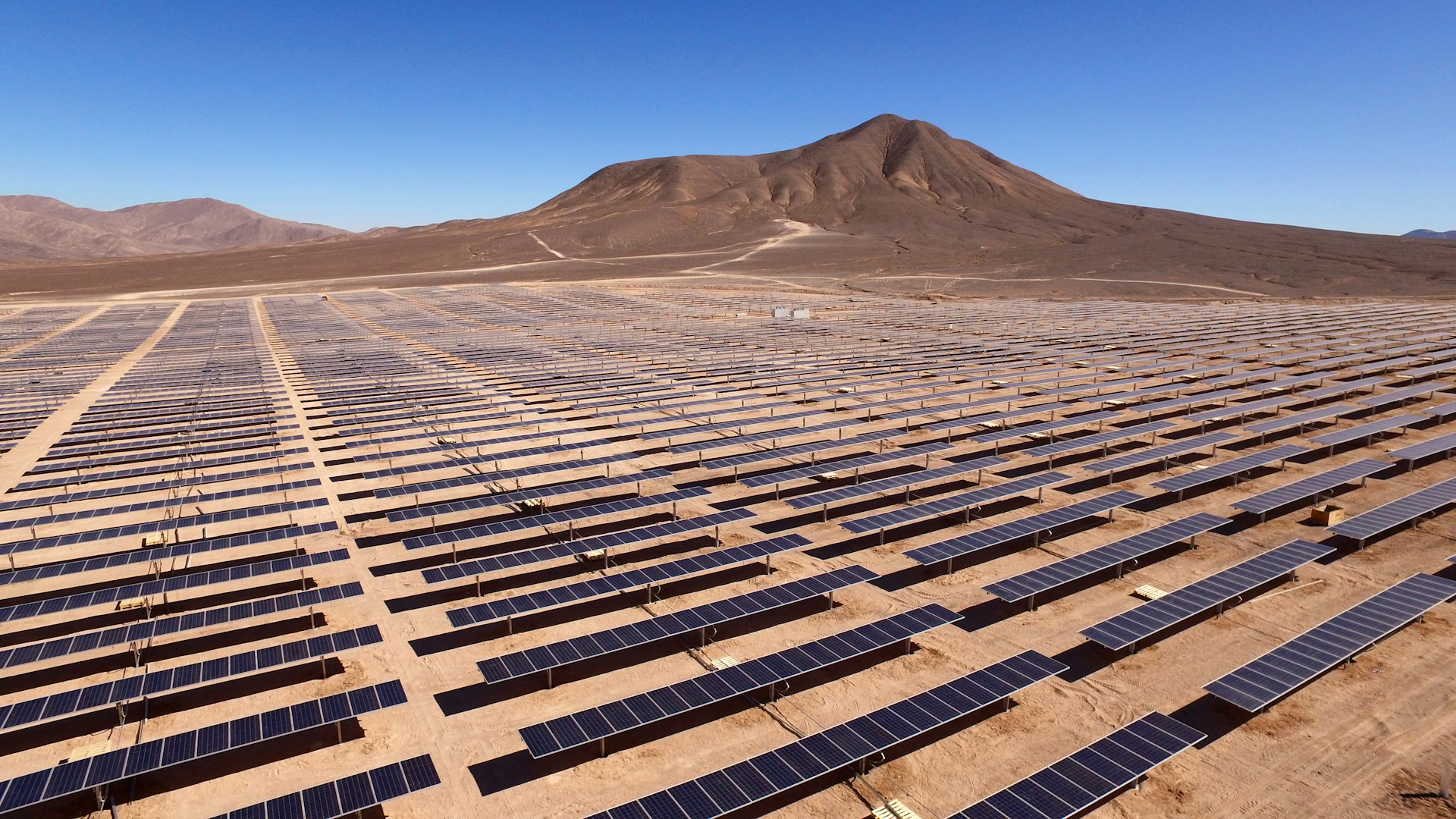Residential Solar Power Plant

Residential Solar Rooftop Power Plant are small-scale solar energy systems installed on the rooftops of individual homes. These systems are designed to capture sunlight using photovoltaic (PV) panels and convert it into electricity for household use. They are becoming increasingly popular in India due to the rising cost of electricity, government incentives, and a growing awareness of environmental sustainability.
Residential Solar Rooftop Power Plant offer numerous benefits that make them an attractive option for homeowners in India. With the combination of cost savings, environmental benefits, government incentives, and increased property value, rooftop solar systems represent a smart investment for sustainable living. As India continues to promote renewable energy, the adoption of residential solar power is expected to grow significantly, contributing to the country’s renewable energy targets, and reducing its carbon footprint.
Service Description
Cras elit lorem viverra ac, eget nulla quis arcu aliquam. Commodo turpis sed ut enim amet. Donec eget id elit sit. Augue pellentesque sit ultricies risus egestas nisl magna.
Photovoltaic (PV) Panels:
Solar panels are made up of multiple solar cells that convert sunlight directly into electricity.
Inverters:
Devices that convert the direct current (DC) generated by the PV panels into alternating current (AC), which is used by household appliances.
Mounting Systems:
Structures that securely fix the solar panels to the rooftop, optimized for maximum sunlight exposure.
Net Metering:
A billing mechanism that credits solar energy system owners for the electricity they add to the grid. If the system produces more power than the home uses, the excess is sent to the grid, and the homeowner receives credit.
Monitoring Systems:
Tools and software that allow homeowners to monitor the performance and efficiency of their solar power system in real-time.
Benefits of Residential Solar Rooftop Power Plant in India
1.Cost Savings:
Significant reduction in electricity bills as homeowners generate their own power, decreasing their reliance on the grid.
2.Return on Investment (ROI):
Though initial installation costs can be high, government incentives and the long-term savings on electricity bills provide a good ROI.
3.Environmental Impact:
Solar energy is clean and renewable, reducing the household’s carbon footprint and contributing to a decrease in greenhouse gas emissions.
4.Energy Independence:
Reduces dependence on the grid and protects homeowners from rising electricity prices and power outages.
5.Government Incentives:
The Indian government offers subsidies, tax rebates, and incentives to encourage the adoption of solar power. This includes a very attractive subsidy on the installation cost from the Ministry of New and Renewable Energy (MNRE).
6.Increased Property Value:
Homes equipped with solar power systems often see an increase in property value due to the long-term energy cost savings and sustainability features.
7.Low Maintenance:
Solar power systems require minimal maintenance. Regular cleaning and occasional professional checks are usually sufficient to keep the system running efficiently.
8.Scalability and Flexibility:
Systems can be customized and scaled according to the energy needs and rooftop space available.
Commercial Solar Power Plant

Commercial solar power Plant are large-scale solar energy systems designed to generate electricity for commercial use. These installations typically consist of multiple solar panels (photovoltaic cells) arranged to capture sunlight and convert it into electrical energy, which can be used to power businesses, factories, and other commercial entities. In India, commercial solar power Plant play a significant role in the transition towards renewable energy and sustainability.
Commercial solar power Plant offer numerous benefits and features that make them an attractive option for businesses in India. By harnessing the abundant solar energy available, businesses can achieve significant cost savings, enhance their sustainability profile, and contribute to India's renewable energy goals.
Features of Commercial Solar Power Plant:
Large-Scale Installations:
These Plant are designed to generate significant amounts of electricity, typically ranging from a few megawatt (MW) to several hundred megawatts.
Grid Connectivity:
They are often connected to the electrical grid, allowing excess power to be fed into the grid and used elsewhere. This process is facilitated by net metering policies.
Photovoltaic (PV) Panels:
Utilize advanced PV technology to convert sunlight directly into electricity. These panels are mounted on large land areas or rooftops of commercial buildings.
Inverters and Transformers:
Convert the direct current (DC) produced by the solar panels into alternating current (AC), which is the standard for commercial electricity use.
Monitoring and Maintenance Systems:
Equipped with sophisticated monitoring systems to track performance and efficiency. Regular maintenance ensures optimal operation.
Benefits of Commercial Solar Power Plant
1.Cost Savings:
➤ Reduces electricity bills significantly for businesses by generating their own power and lowering dependence on the grid.
2.Energy Independence:
➤ Helps businesses become more energy independent, reducing vulnerability to power outages and price volatility in the energy market.
3.Environmental Impact:
➤ Solar energy is a clean, renewable source that reduces greenhouse gas emissions and pollution compared to fossil fuels.
4.Government Incentives:
➤ The Indian government offers various incentives, such as subsidies, tax benefits, and accelerated depreciation, to promote solar energy adoption.
5.Sustainability Goals:
➤ Aligns with corporate social responsibility (CSR) initiatives and sustainability goals, enhancing brand reputation and compliance with environmental regulations.
6.Scalability and Flexibility:
➤ Can be scaled to meet the specific energy needs of different businesses, from small enterprises to large industrial complexes.
7.Reduced Carbon Footprint:
➤ Contributes to the reduction of carbon footprint, aiding India’s commitment to international climate agreements and renewable energy targets.
Industrial Solar Power Plant

Industrial solar power Plant are large-scale solar energy systems designed to generate electricity primarily for industrial use. These installations can range from a few megawatts (MW) to several hundred megawatts and are typically set up on large tracts of land or the rooftops of industrial facilities. They play a critical role in meeting the energy demands of industries while promoting sustainability and reducing operational costs.
Industrial solar power Plant offer numerous benefits that make them an attractive option for industries in India. With the ability to significantly reduce energy costs, enhance sustainability, and provide a reliable power source, these systems are a smart investment for industries looking to improve their bottom line and environmental impact. As India continues to push for renewable energy adoption, industrial solar power Plant are poised to play a crucial role in the country’s energy landscape.
Features of Commercial Solar Power Plant:
High-Capacity Installations:
Typically designed to generate power in the range of several megawatts (MW), capable of meeting the high energy demands of industrial operations.
Large-Scale Photovoltaic (PV) Panels:
Utilize advanced PV technology to convert sunlight directly into electricity. These panels are installed in vast arrays to capture maximum sunlight.
High-Capacity Inverters:
Convert the direct current (DC) produced by the PV panels into alternating current (AC), which is used by industrial machinery and processes.
Mounting and Tracking Systems:
Use robust mounting structures that can support large-scale solar arrays. Some systems include tracking technology that adjusts the panels to follow the sun’s path, maximizing energy capture.
Grid Connectivity:
Often connected to the local or national grid, allowing for the export of excess electricity generated. This is facilitated by net metering or feed-in tariffs.
Energy Storage Systems (Optional):
Incorporation of high-capacity batteries to store excess energy for use during non-sunny periods or peak demand times, ensuring a stable power supply.
Monitoring and Management Systems:
Equipped with sophisticated software and hardware to monitor performance, predict maintenance needs, and optimize energy production.
Benefits of Commercial Solar Power Plant
1.Cost Savings:
Substantial reduction in electricity costs by generating own power. Excess energy can be sold back to the grid, providing additional revenue.
2.Energy Security:
Reduces dependency on grid electricity, which can be unreliable or expensive. Provides a stable and predictable power source.
3.Environmental Benefits:
Reduces greenhouse gas emissions and lowers the carbon footprint, contributing to environmental sustainability and compliance with environmental regulations.
4.Government Incentives:
Various financial incentives from the Indian government, such as capital subsidies, tax rebates, and accelerated depreciation, make solar installations financially attractive.
5.Corporate Social Responsibility (CSR):
Enhances the company’s reputation by demonstrating a commitment to sustainable practices and reducing environmental impact.
6.Long-Term Investment:
Initial set-up costs are offset by long-term savings on electricity bills and revenue from excess power. Solar Plant have a long operational life with minimal maintenance costs.
7.Increased Property Value:
Industrial facilities with solar installations may see an increase in property value due to lower operational costs and enhanced sustainability profile.
8.Scalability and Flexibility:
Solar power systems can be scaled to meet the specific energy needs of different industries, from small manufacturing units to large industrial complexes.
9.Grid Stability:
By generating and sometimes storing electricity, industrial solar Plant can contribute to grid stability and reduce the need for additional infrastructure investments.
Institutionl Solar Power Plant

An institutional solar power plant is a solar energy system installed at educational institutions, hospitals, government buildings, non-profit organizations, and other similar facilities. These Plant are designed to meet the specific energy needs of institutions, helping them reduce electricity costs, promote sustainability, and contribute to environmental stewardship.
Institutional solar power Plant are a powerful tool for educational, healthcare, governmental, and non-profit organizations to reduce energy costs, promote sustainability, and enhance operational resilience. By harnessing solar energy, institutions can lead by example, demonstrating their commitment to environmental stewardship and providing a valuable educational resource for future generations. Investing in a solar power plant not only brings financial and environmental benefits but also solidifies the institution's role as a leader in the transition to renewable energy.
Features of Commercial Solar Power Plant:
Customized Design:
Tailored to meet the specific energy requirements and architectural constraints of the institution, ensuring optimal energy production and integration with existing infrastructure.
On-Site Energy Generation:
Solar panels are installed on available rooftop space, ground areas, or even parking structures, providing a reliable source of on-site renewable energy.
Energy Storage Solutions:
Often include battery storage systems to store excess energy generated during peak sunlight hours, ensuring a steady power supply, and reducing reliance on the grid during peak demand or outages.
Monitoring and Management Systems:
Equipped with advanced monitoring and management systems that track energy production, consumption, and system performance, providing valuable data for optimizing energy usage and maintenance.
Grid-Connected and Off-Grid Options:
Can be designed as grid-connected systems to feed excess power back to the grid or as off-grid systems for remote institutions not connected to the electrical grid.
Scalability:
Modular design allows for easy expansion as the institution's energy needs grow or additional funding becomes available, providing flexibility for future developments.
Educational Opportunities:
For educational institutions, solar power Plant serve as a live educational tool, providing hands- on learning opportunities for students in renewable energy, sustainability, and engineering.
Benefits of Commercial Solar Power Plant
1.Cost Savings:
Significant reduction in electricity bills by generating a portion or all the institution's electricity needs on-site, leading to long-term financial savings.
2.Environmental Impact:
Reduces the institution's carbon footprint by decreasing reliance on fossil fuels and lowering greenhouse gas emissions, contributing to environmental sustainability.
3.Energy Independence:
Enhances energy security by providing a reliable and independent source of power, especially beneficial for critical institutions like hospitals and research centers.
4.Public Image and Leadership:
Demonstrates a commitment to sustainability and environmental responsibility, enhancing the institution's public image and serving as a model for the community.
5.Government Incentives:
Access to various government incentives, grants, and subsidies for renewable energy projects, which can help offset initial installation costs and improve the return on investment.
6.Operational Resilience:
Increases resilience against power outages and grid failures, ensuring continuous operation of essential services and reducing disruptions.
7.Educational Value:
Provides educational institutions with a real-world example of renewable energy in action, enriching the curriculum and fostering a culture of sustainability among students and staff.
8.Long-Term Investment:
Solar power Plant are long-term investments that can provide reliable energy for decades, with relatively low maintenance costs compared to traditional energy sources.
Ground Mounted Solar Power Plant

A ground-mounted solar power plant is a type of solar energy installation where photovoltaic (PV) panels are installed on the ground rather than on rooftops. These systems are typically used for larger-scale solar projects, such as solar farms, commercial installations, and utility-scale solar power Plant. Ground-mounted systems are suitable for locations with ample open space and can be designed to maximize energy production.
Ground-mounted solar power Plant offer a versatile and efficient solution for large-scale solar energy generation. With their ability to optimize panel orientation, scalability, and ease of maintenance, these systems are well-suited for meeting the energy demands of commercial, industrial, and utility applications. By harnessing the power of the sun, ground-mounted solar power Plant contribute to a sustainable and eco-friendly energy future.
Features of Commercial Solar Power Plant:
Versatile Installation Options:
Fixed Tilt Systems: Panels are installed at a fixed angle to maximize sunlight exposure based on the geographical location.
Single-Axis Trackers: Panels rotate along one axis to follow the sun's path from east to west, increasing energy capture.
Dual-Axis Trackers: Panels adjust along two axes, tracking the sun's movement throughout the day and the seasons, optimizing energy production.
Optimal Orientation and Tilt:
Ground-mounted systems can be precisely oriented and tilted to achieve the best possible angle for maximum sunlight exposure, enhancing energy efficiency.
Scalability:
These systems can be scaled up to accommodate large areas, making them ideal for utility-scale and commercial projects that require significant energy output.
Accessibility for Maintenance:
Ground-mounted installations offer easy access for maintenance and cleaning, ensuring that the panels operate at peak efficiency over their lifespan.
Enhanced Cooling:
The space between the ground and the panels allows for better airflow, which can help cool the panels and improve their efficiency compared to rooftop installations.
Benefits of Commercial Solar Power Plant
1.Higher Energy Production:
The ability to optimize the orientation and tilt of the panels, combined with the use of tracking systems, results in higher energy production compared to rooftop systems.
2.Flexibility in Site Selection:
Ground-mounted systems can be installed on a variety of terrains, including unused land, agricultural fields, and industrial zones, making them a versatile option for solar energy projects.
3.Minimal Structural Constraints:
Unlike rooftop systems, ground-mounted installations are not limited by the structural integrity of buildings, allowing for the installation of larger and heavier panels if needed.
4.Easier Expansion:
Ground-mounted solar power Plant can be easily expanded by adding more panels to the array as energy needs grow or as additional funding becomes available.
5.Improved Energy Security:
Large-scale ground-mounted systems contribute to energy security by providing a substantial and reliable source of renewable energy, reducing dependence on fossil fuels.
6.Environmental Benefits:
These systems produce clean, renewable energy, significantly reducing greenhouse gas emissions and contributing to efforts to combat climate change.
7.Economic Advantages:
Large-scale installations can benefit from economies of scale, reducing the cost per watt of solar energy produced and making solar power more competitive with traditional energy sources.
Off Grid Power Plant

An off-grid solar power plant is a standalone solar energy system designed to operate independently from the traditional electricity grid. It provides a reliable source of electricity in remote or rural areas where grid access is unavailable or unreliable. Off-grid systems use solar panels to generate electricity, which is then stored in batteries for use when sunlight is not available.
Off-grid solar power Plant are an excellent solution for providing reliable and sustainable electricity in areas without access to the traditional power grid. By harnessing the power of the sun, these systems offer numerous benefits, including energy independence, cost savings, environmental sustainability, and enhanced resilience. Whether for a remote home, a rural community, or a critical facility, off-grid solar power Plant are a powerful tool in the transition to renewable energy and sustainable development.
Features of Off-Grid Solar Power Plant:
Solar Panels:
The primary component for capturing sunlight and converting it into electricity. High-efficiency panels are essential for maximizing energy production.
Battery Storage:
Critical for storing the electricity generated during the day for use during nighttime or cloudy days. Batteries ensure a continuous power supply even when solar generation is low or nonexistent.
Inverter:
Converts the direct current (DC) electricity stored in the batteries into alternating current (AC) electricity, which is compatible with most household and commercial appliances.
Manages the flow of electricity from the solar panels to the batteries, preventing overcharging and ensuring efficient charging and discharging cycles.
Mounting Structures:
Used to secure solar panels in optimal positions to capture maximum sunlight, which can be ground- mounted or rooftop-mounted based on-site conditions.
Monitoring System:
Provides real-time data on the system's performance, including energy production, battery status, and overall efficiency, allowing for proactive maintenance and optimization.
Benefits of Off-Grid Solar Power Plant
1.Energy Independence:
Completely independent from the traditional power grid, providing reliable electricity in remote or off-grid locations.
2.Cost Savings:
Eliminates electricity bills and reduces dependence on fossil fuels, leading to significant long-term cost savings.
3.Environmental Benefits:
Produces clean, renewable energy with no greenhouse gas emissions, contributing to a reduction in carbon footprint and environmental impact.
4.Reliability and Resilience:
Provides a dependable power source in areas prone to grid outages, natural disasters, or where grid connectivity is unreliable.
5.Scalability:
Off-grid systems can be scaled up or down based on energy requirements and available budget, allowing for future expansion as needs grow.
6.Versatility:
Suitable for a wide range of applications, including residential homes, agricultural operations, remote schools, medical clinics, and small businesses.
7.Support for Sustainable Living:
Encourages sustainable living practices by promoting the use of renewable energy and reducing dependence on non-renewable resources.
8.Economic Development:
Provides electricity in underserved areas, promoting economic development and improving the quality of life by powering essential services like lighting, refrigeration, and communication.
9.Minimal Maintenance:
Designed for long-term use with relatively low maintenance requirements, especially when using high-quality components.